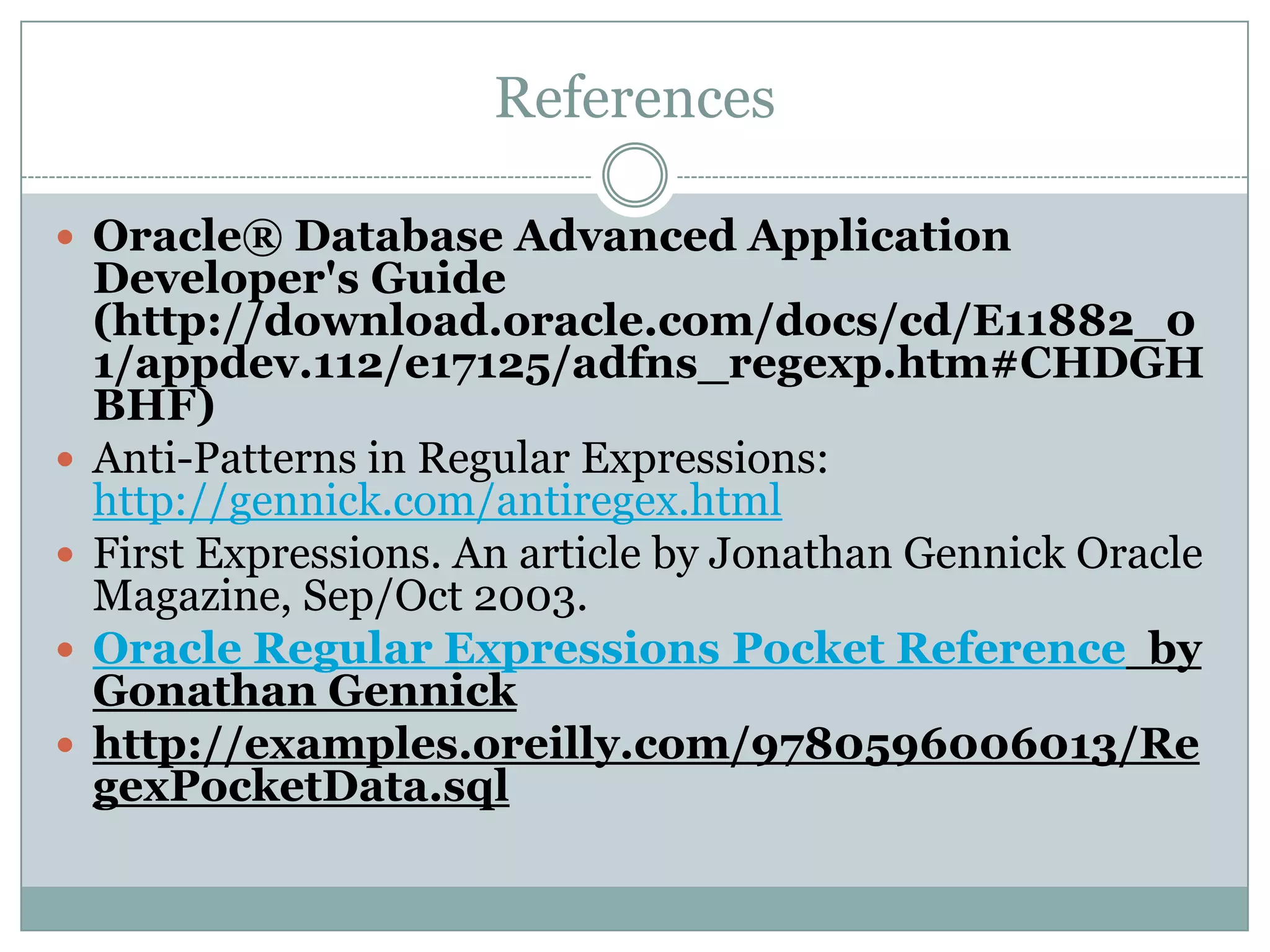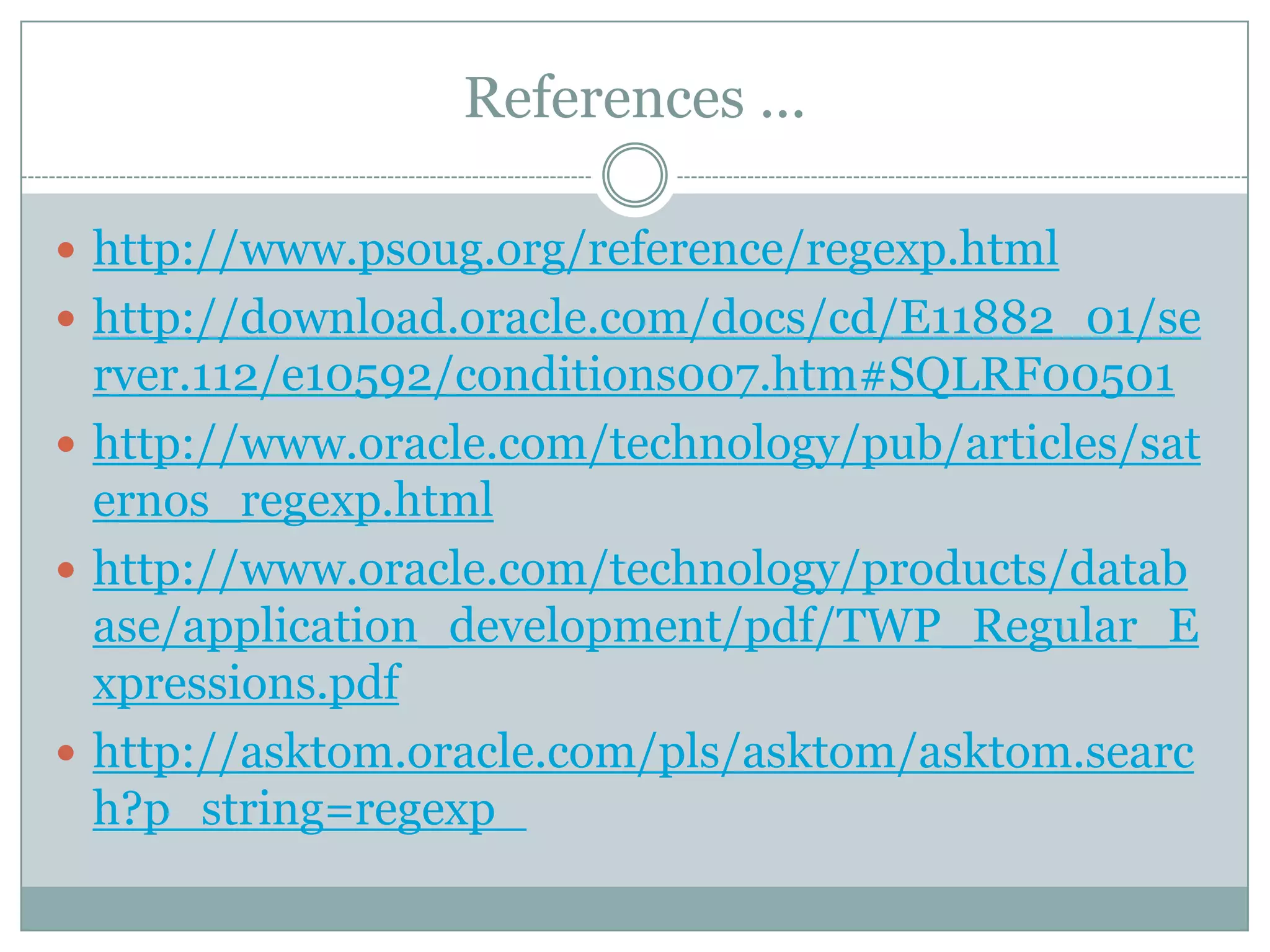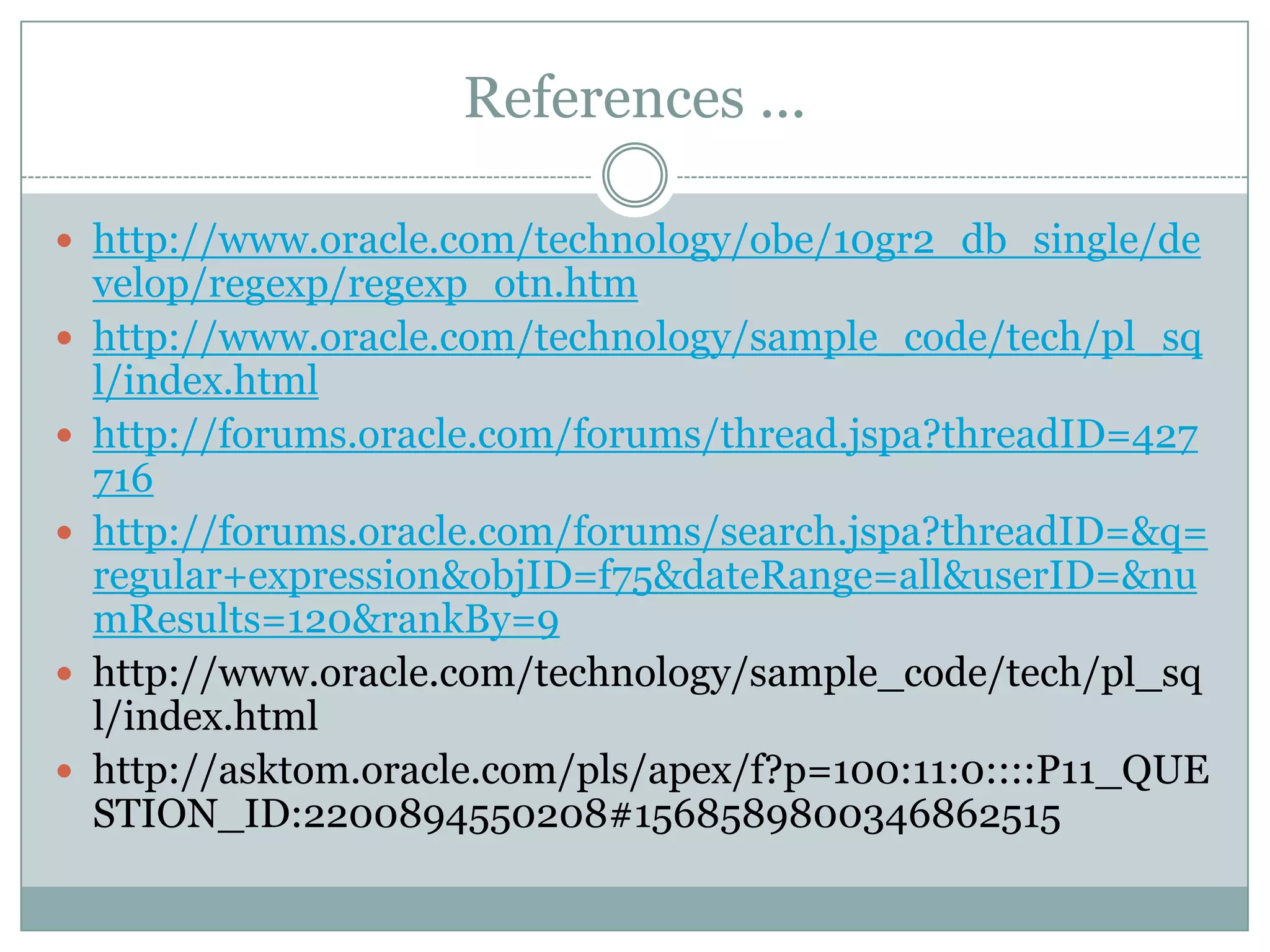The document provides an extensive overview of regular expressions in Oracle, detailing their introduction, functionality, and various regexp functions available from version 10g onwards. It includes practical examples, syntax rules, and applications for data validation, extraction, and manipulation. Additionally, it covers performance considerations, user tools for learning, and references for further reading.

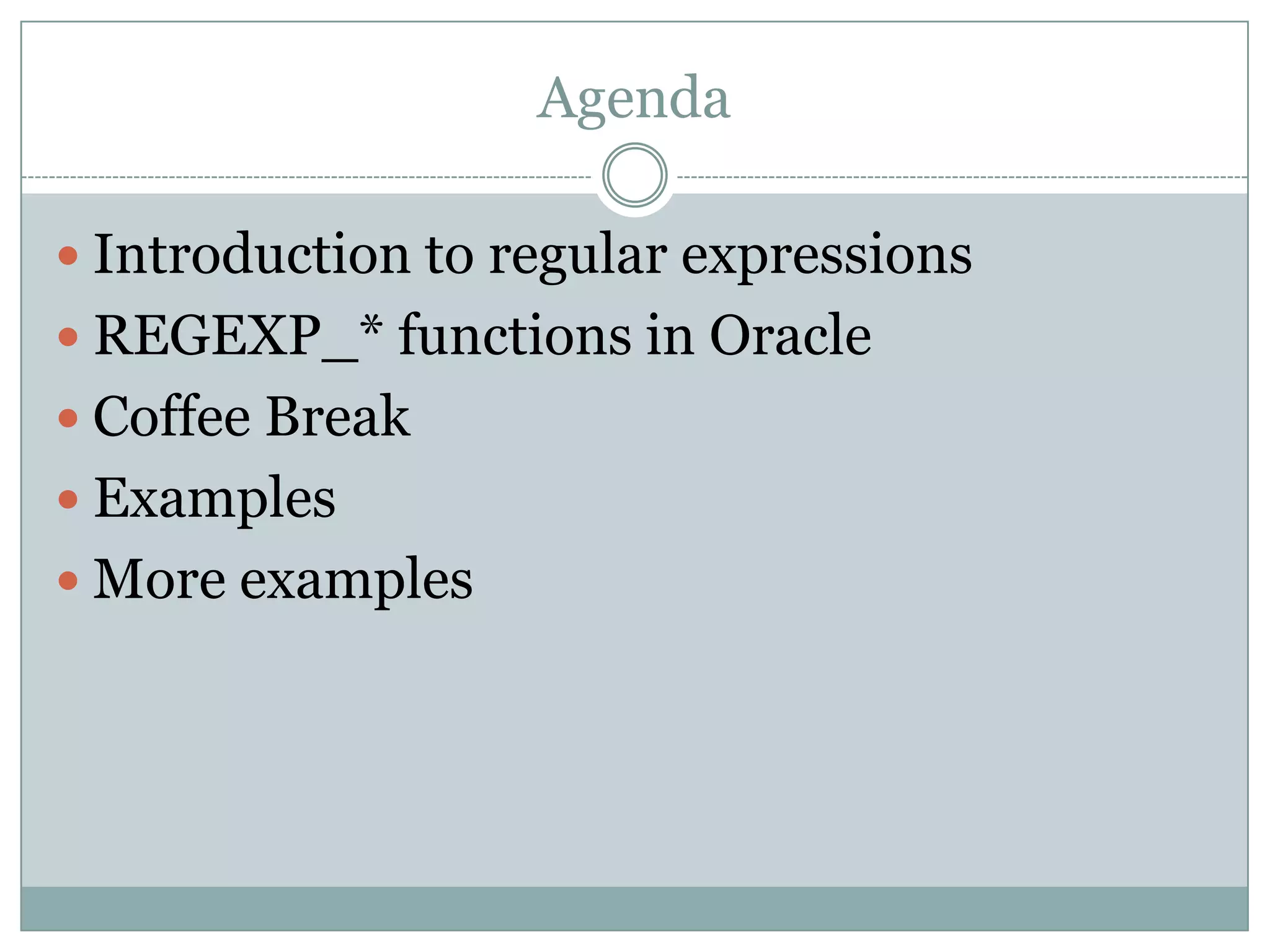


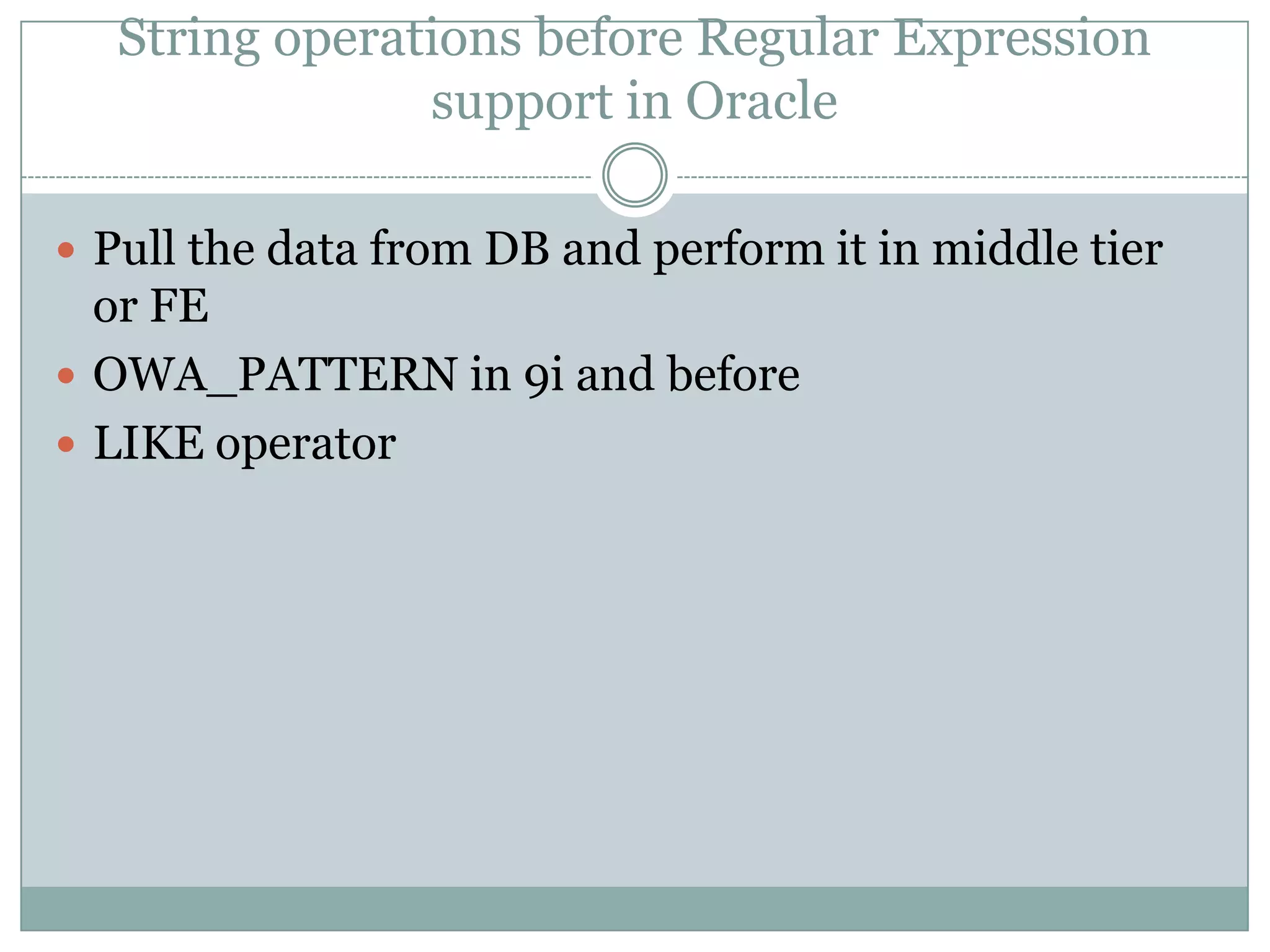
![LIKE operator % matches zero or more of any character _ matches exactly one character Examples WHERE col1 LIKE 'abc%'; WHERE col1 LIKE '%abc'; WHERE col1 LIKE 'ab_d'; WHERE col1 LIKE 'ab_d' escape ''; WHERE col1 NOT LIKE 'abc%'; Very limited functionality Check whether first character is numeric: where c1 like '0%' OR c1 like '1%' OR .. .. c1 like '9%' Very trivial with Regular Exp: where regexp_like(c1, '^[0-9]')](https://image.slidesharecdn.com/regularexpressionsinoracle-120508161259-phpapp02/75/Regular-expressions-in-oracle-6-2048.jpg)
![Regular Expressions Meta Meaning character . Matches any single "character" except newline. * Matches zero or more of the character preceding it e.g.: bugs*, table.* ^ Denotes the beginning of the line. ^A denotes lines starting with A $ Denotes the end of the line. :$ denotes lines ending with : Escape character (., *, [, , etc) [] matches one or more characters within the brackets. e.g. [aeiou], [a-z], [a-zA-Z], [0-9], [:alpha:], [a-z?,!] [^] negation - matches any characters other than the ones inside brackets. eg. ^[^13579] denotes all lines not starting with odd numbers, [^02468]$ denotes all lines not ending with even numbers 7](https://image.slidesharecdn.com/regularexpressionsinoracle-120508161259-phpapp02/75/Regular-expressions-in-oracle-7-2048.jpg)

![POSIX Character Classes POSIX Description [:alnum:] Alphanumeric characters [:alpha:] Alphabetic characters [:ascii:] ASCII characters [:blank:] Space and tab [:cntrl:] Control characters [:digit:] Digits, Hexadecimal digits [:xdigit:] [:graph:] Visible characters (i.e. anything except spaces, control characters, etc.) [:lower:] Lowercase letters [:print:] Visible characters and spaces (i.e. anything except control characters) [:punct:] Punctuation and symbols. [:space:] All whitespace characters, including line breaks [:upper:] Uppercase letters [:word:] Word characters (letters, numbers and underscores)](https://image.slidesharecdn.com/regularexpressionsinoracle-120508161259-phpapp02/75/Regular-expressions-in-oracle-9-2048.jpg)
![Perl Character Classes Perl POSIX Description d [[:digit:]] [0-9] D [^[:digit:]] [^0-9] w [[:alnum:]_] [0-9a-zA-Z_] W [^[:alnum:]_] [^0-9a-zA-Z_] s [[:space:]] S [^[:space:]] 10](https://image.slidesharecdn.com/regularexpressionsinoracle-120508161259-phpapp02/75/Regular-expressions-in-oracle-10-2048.jpg)


![REGEXP_LIKE Determines whether pattern matches. REGEXP_LIKE (source_str, pattern, [,match_parameter]) Returns TRUE or FALSE. Use in WHERE clause to return rows matching a pattern Use as a constraint alter table t add constraint alphanum check (regexp_like (x, '[[:alnum:]]')); Use in PL/SQL to return a boolean. IF (REGEXP_LIKE(v_name, '[[:alnum:]]')) THEN .. Can't be used in SELECT clause regexp_like.sql](https://image.slidesharecdn.com/regularexpressionsinoracle-120508161259-phpapp02/75/Regular-expressions-in-oracle-13-2048.jpg)
![REGEXP_SUBSTR Extracts the matching pattern. Returns NULL when nothing matches REGEXP_SUBSTR(source_str, pattern [, position [, occurrence [, match_parameter]]]) position: character at which to begin the search. Default is 1 occurrence: The occurrence of pattern you want to extract regexp_substr.sql](https://image.slidesharecdn.com/regularexpressionsinoracle-120508161259-phpapp02/75/Regular-expressions-in-oracle-14-2048.jpg)
![REGEXP_INSTR Returns the location of match in a string REGEXP_INSTR(source_str, pattern, [, position [, occurrence [, return_option [, match_parameter]]]]) return_option: 0, the default, returns the position of the first character. 1 returns the position of the character following the occurence. regexp_instr.sql](https://image.slidesharecdn.com/regularexpressionsinoracle-120508161259-phpapp02/75/Regular-expressions-in-oracle-15-2048.jpg)
![REGEXP_REPLACE Search and Replace a pattern REGEXP_REPLACE(source_str, pattern [, replace_str] [, position [, occurrence [, match_parameter]]]]) If replace_str is not specified, pattern/search_str is replaced with empty string occurence: when 0, the default, replaces all occurrences of the match. when n, any positive integer, replaces the nth occurrence. regexp_replace.sql](https://image.slidesharecdn.com/regularexpressionsinoracle-120508161259-phpapp02/75/Regular-expressions-in-oracle-16-2048.jpg)
![REGEXP_COUNT New in 11g Returns the number of times a pattern appears in a string. REGEXP_COUNT(source_str, pattern [,position [,match_param]]) For simple patterns it is same as (LENGTH(source_str) – LENGTH(REPLACE(source_str, pattern)))/LENGTH(pattern) regexp_count.sql](https://image.slidesharecdn.com/regularexpressionsinoracle-120508161259-phpapp02/75/Regular-expressions-in-oracle-17-2048.jpg)
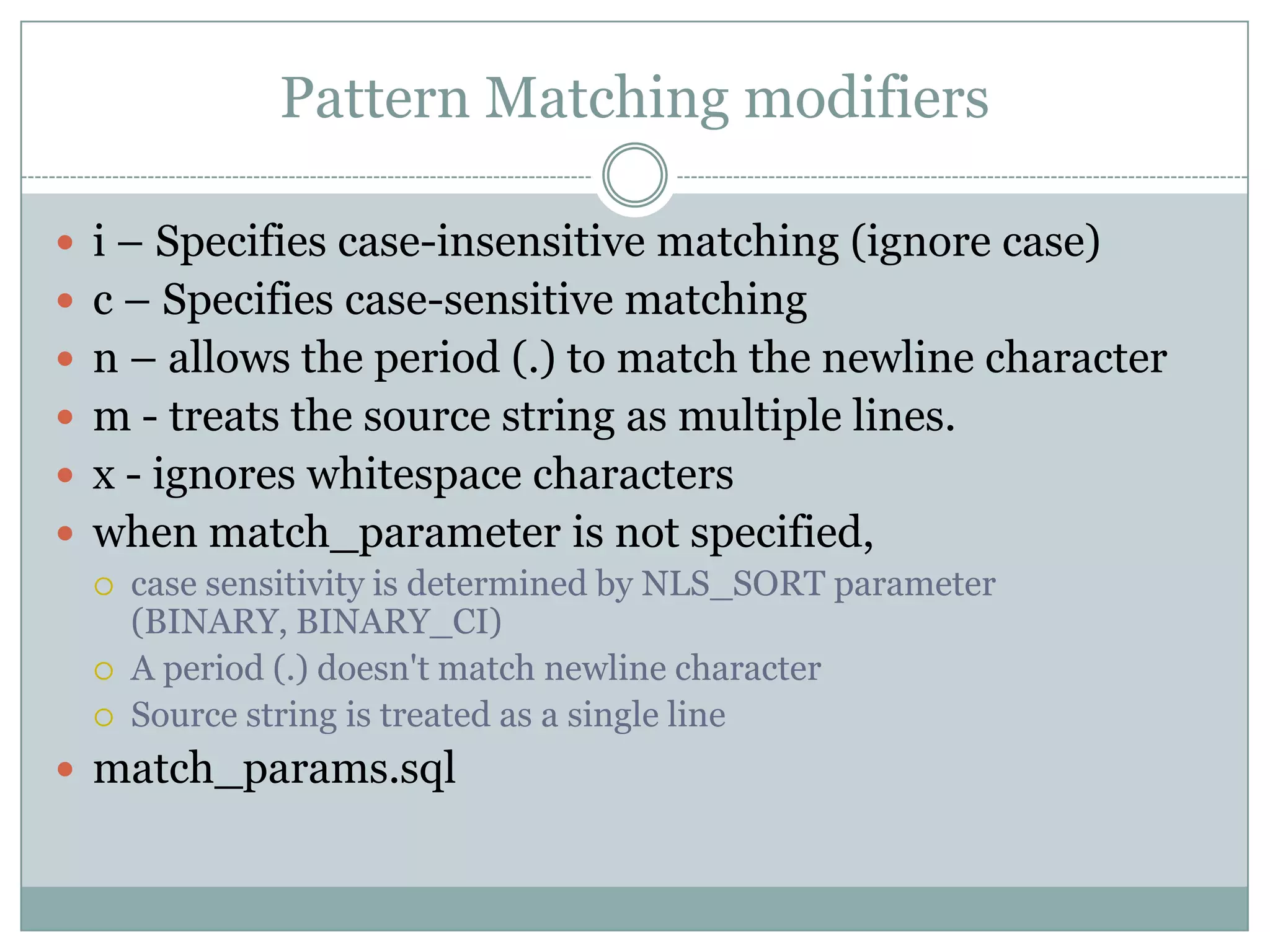
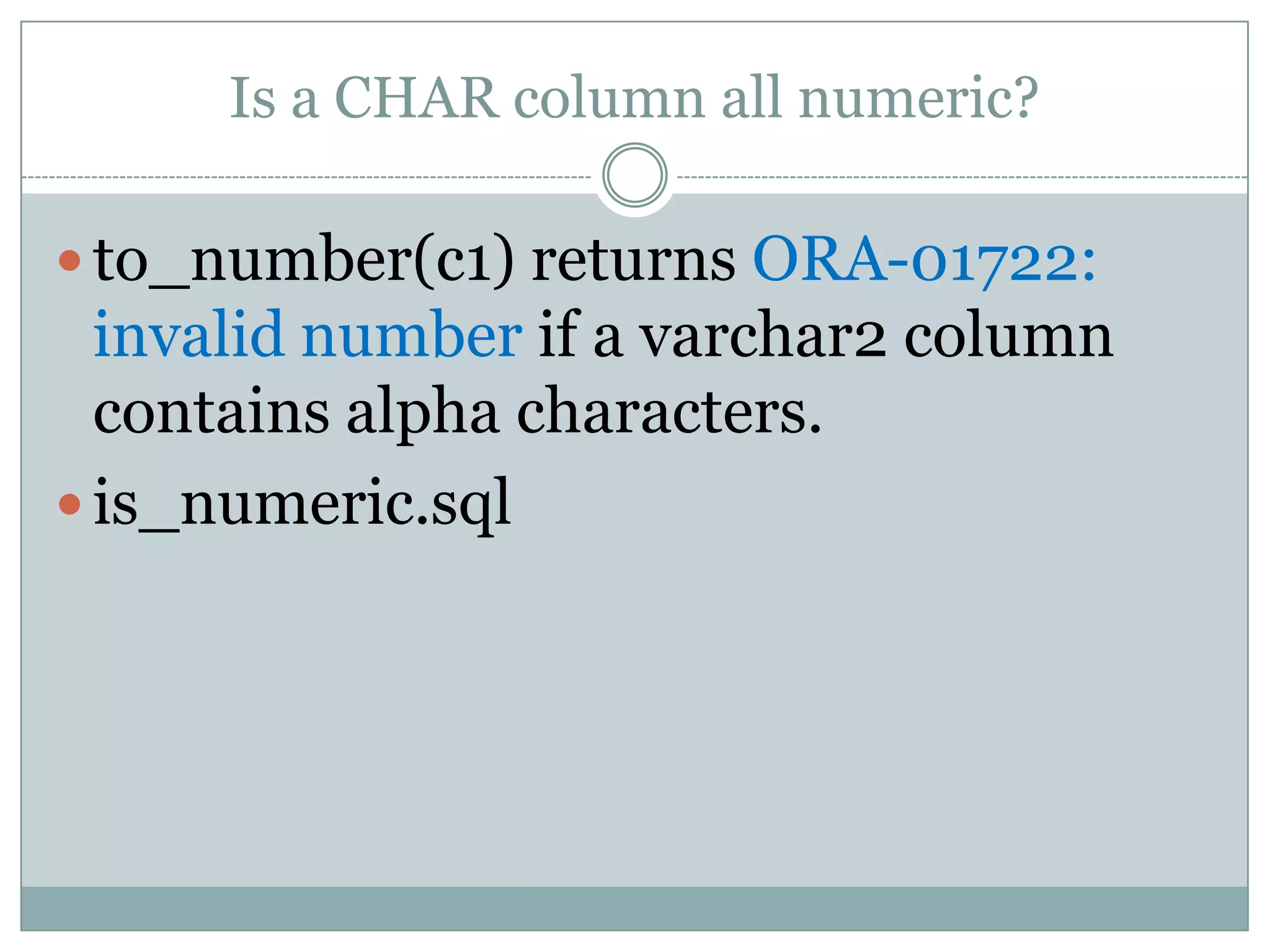

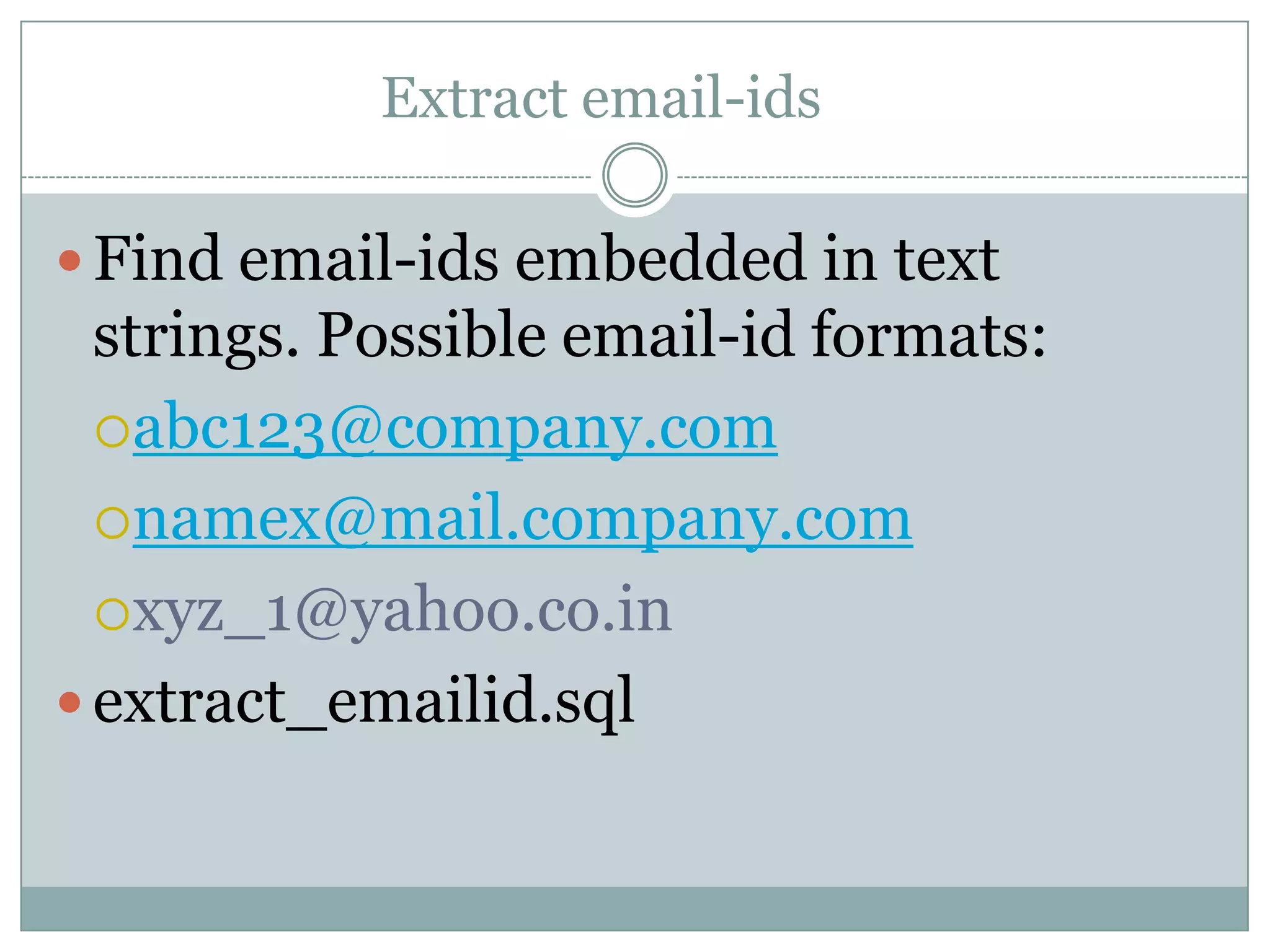
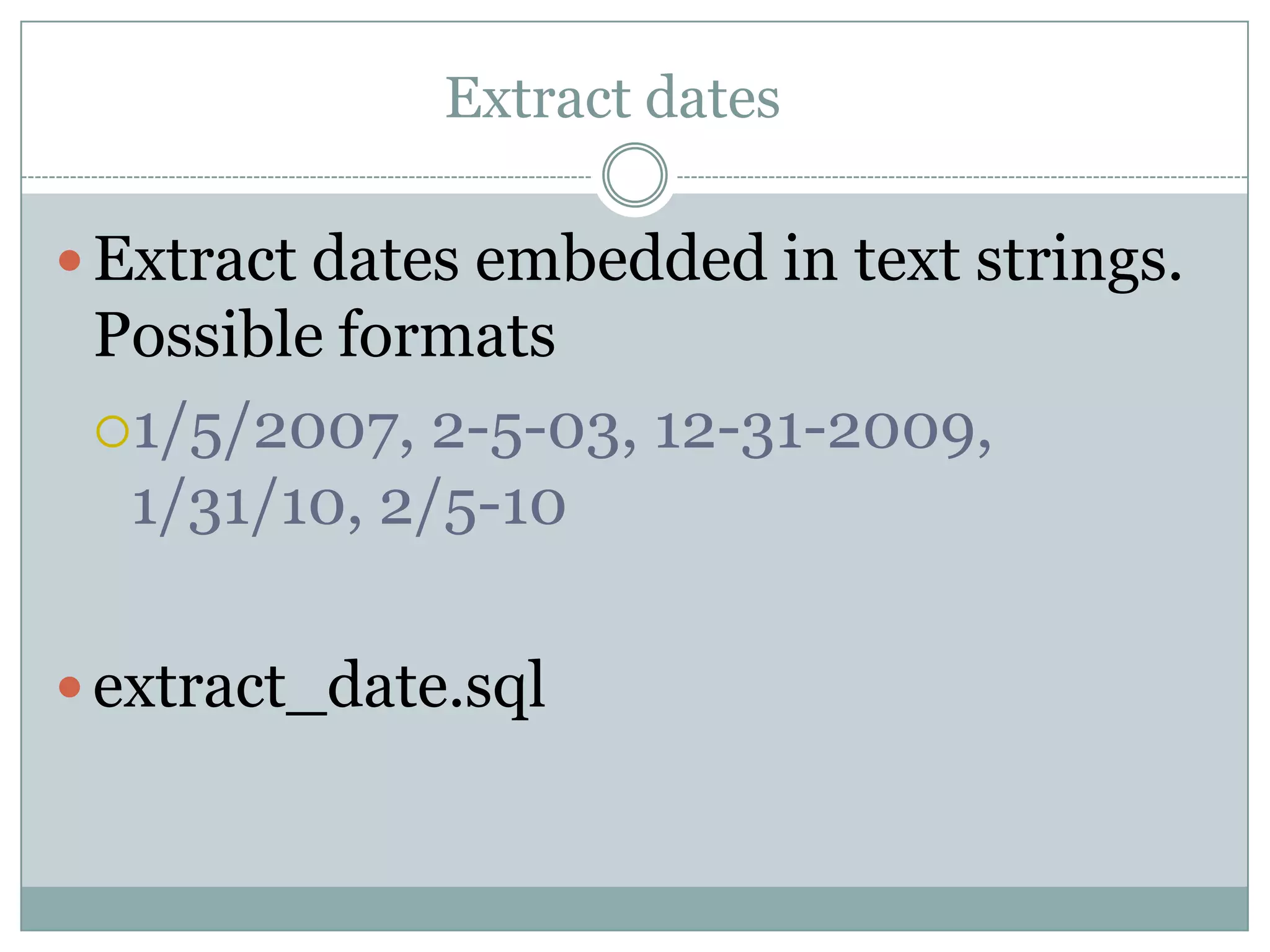
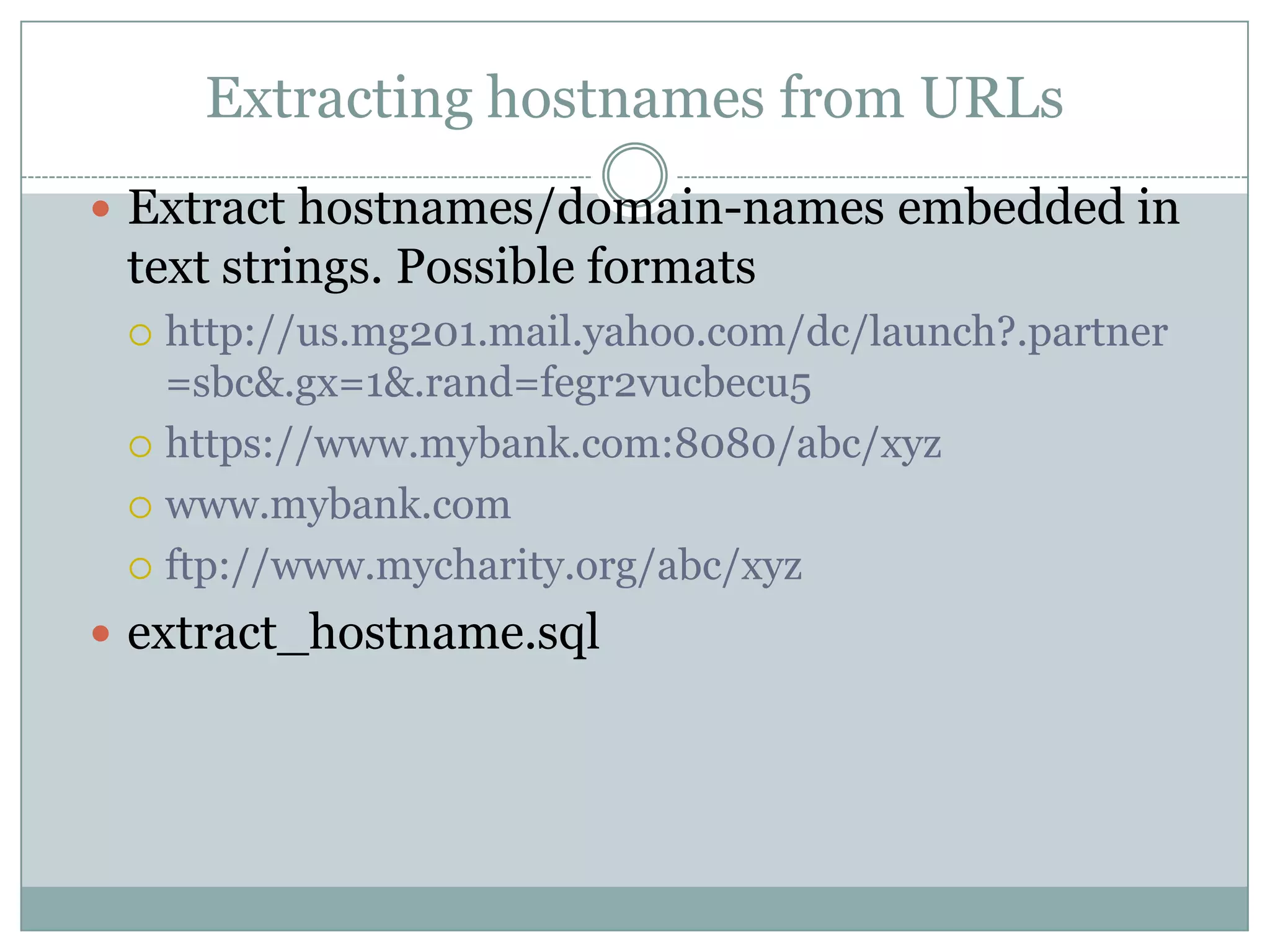
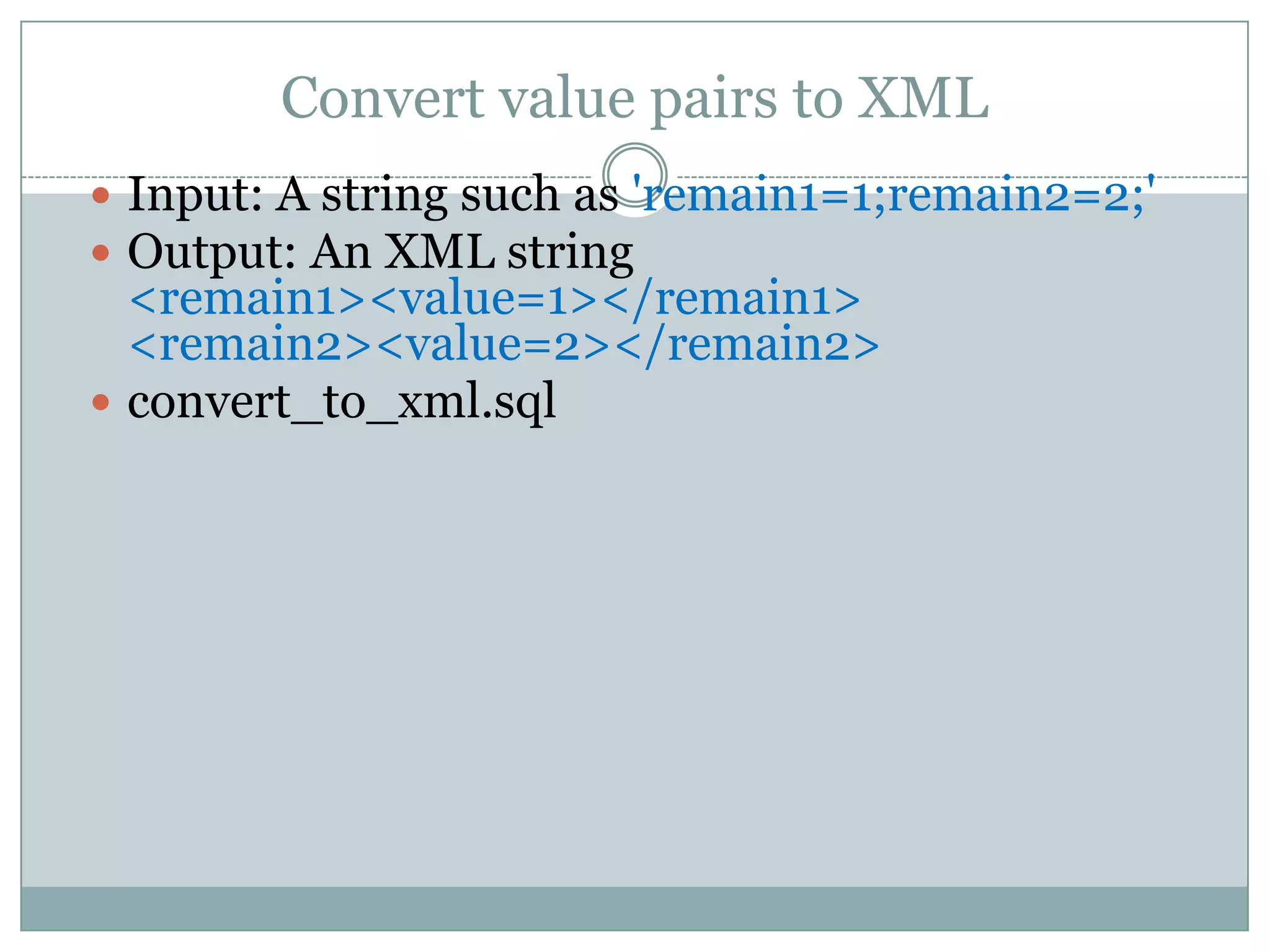
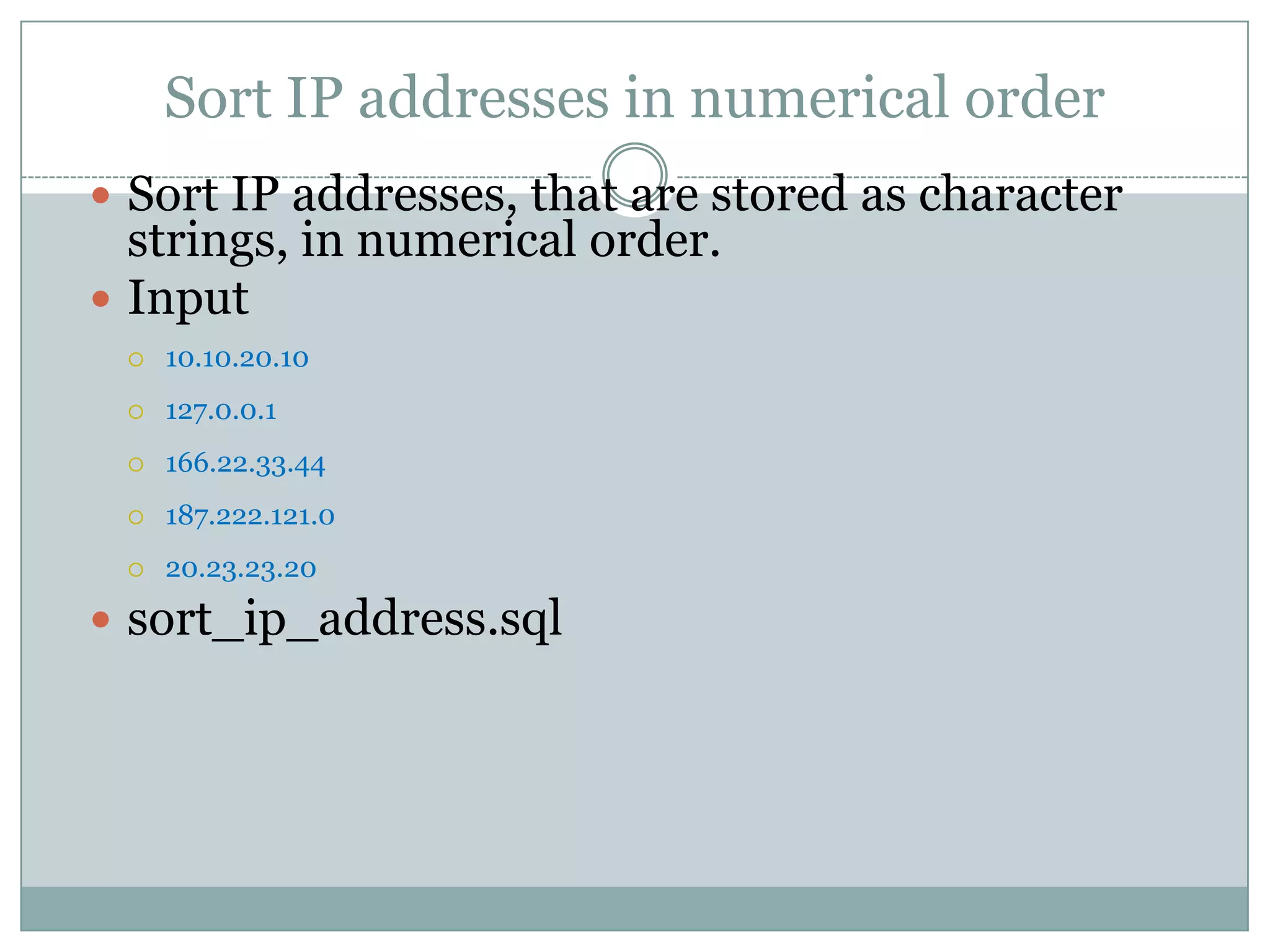

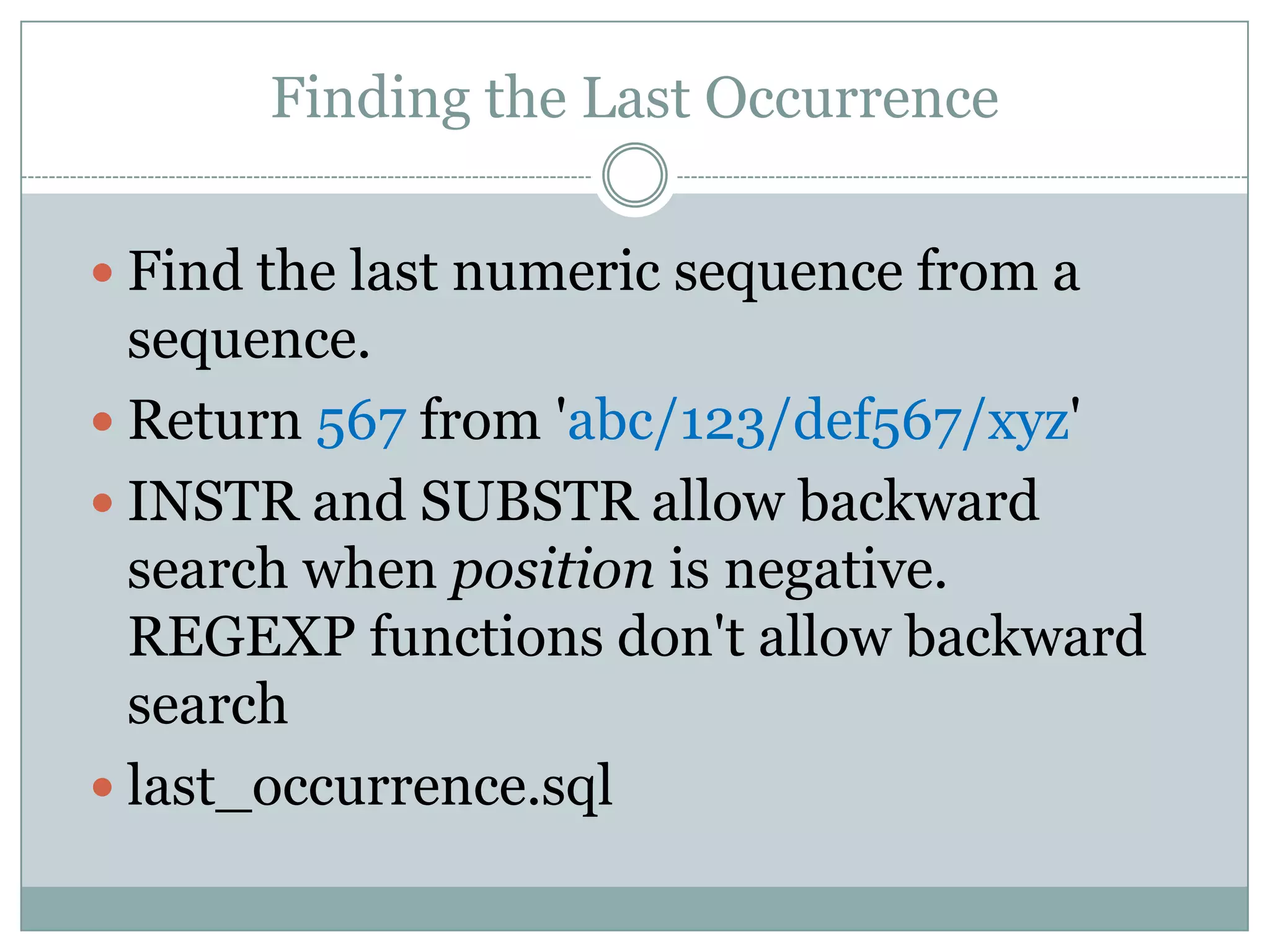




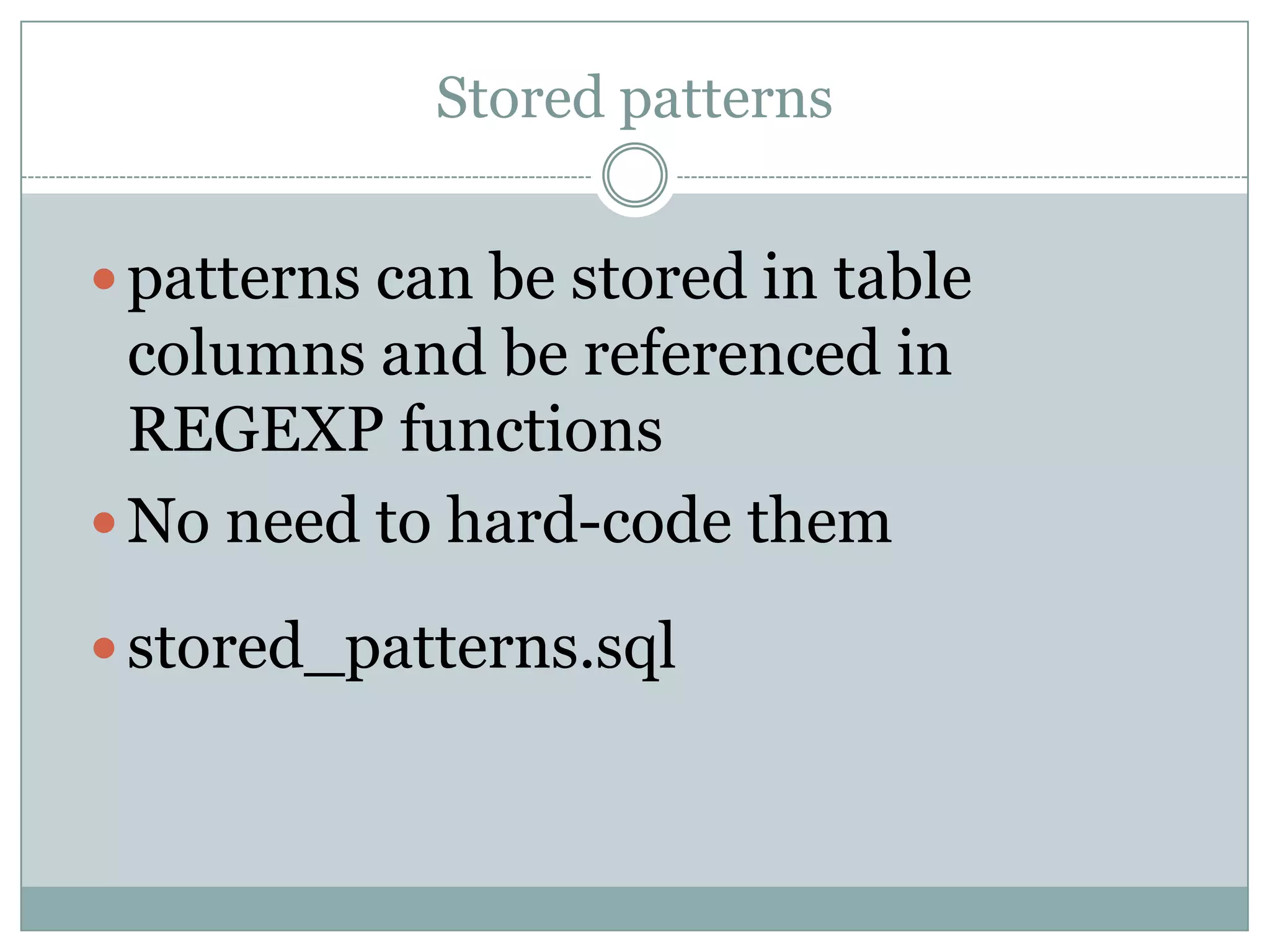
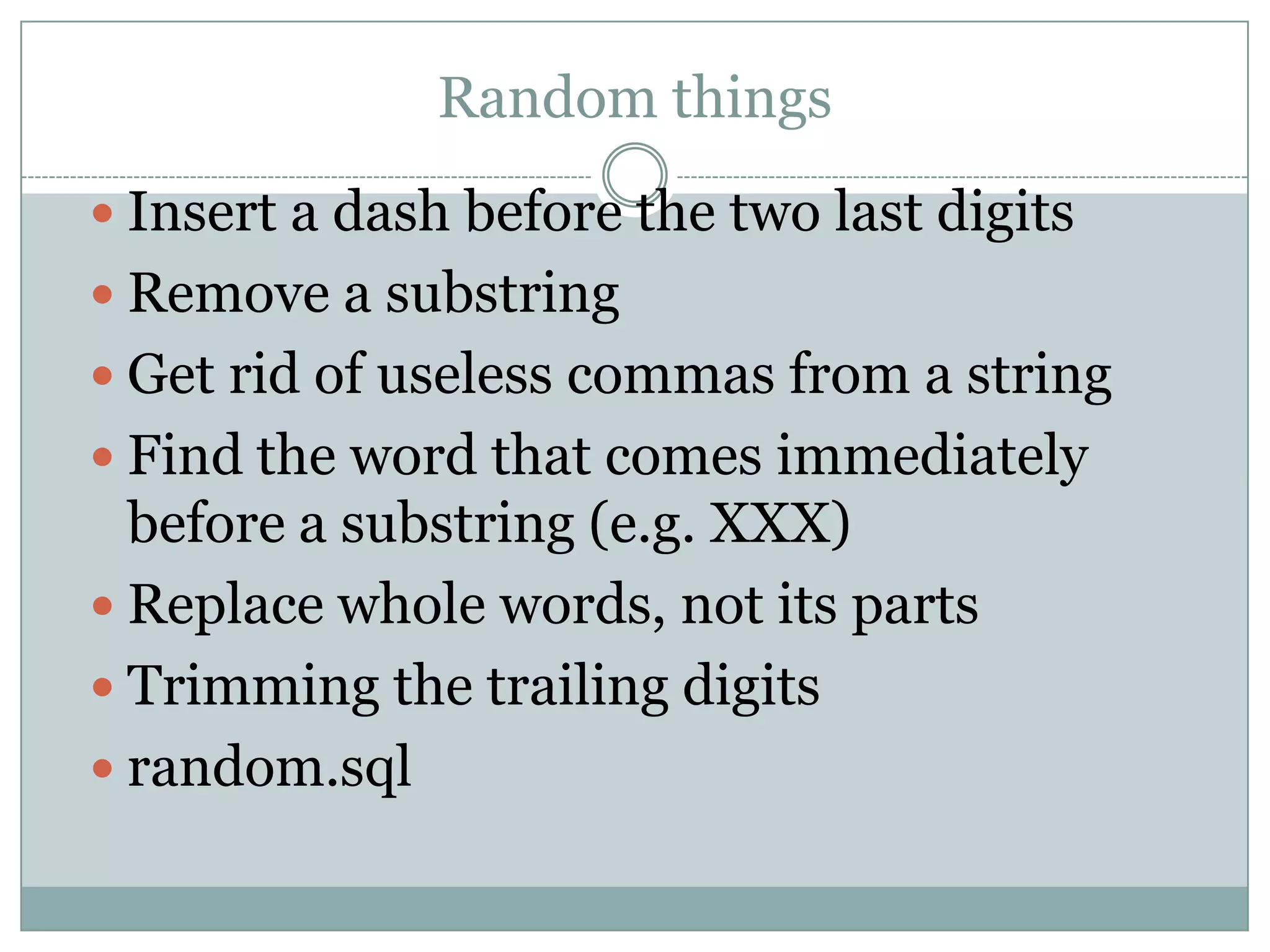
![A few other points When not to use Regular Expressions If the same thing could be used without regular expressions and without too much coding. POSIX notations need double brackets [[:upper]]. [:upper:] won't work. [[:UPPER:]] won't work either. It has to be in lower case letters. Locale support provided with Collation Element ][.ce.]], and Equivalence Classes [[=e=]] MySQL supports regular expressions with RLIKE](https://image.slidesharecdn.com/regularexpressionsinoracle-120508161259-phpapp02/75/Regular-expressions-in-oracle-34-2048.jpg)
